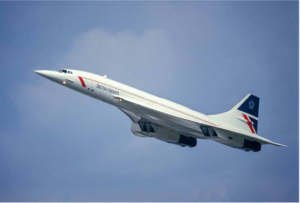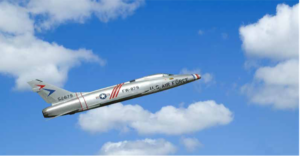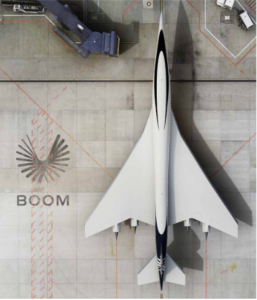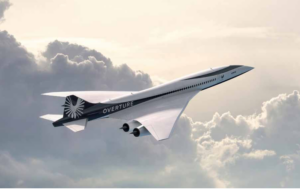I saw the future in 1973. Aged 6, at Johannesburg Airport, I gazed in awe at an airplane unlike any other. With swept-back wings and a sharp nose, it looked like a paper dart, its name emblazoned on its tail: Concorde.
The aircraft was a prototype, visiting South Africa for test flights in “hot and high” conditions. It shared the apron with several propeller airliners, as well as more modern Boeing jets, and clearly represented a giant leap in aviation … a preview of a world in which supersonic flight would be commonplace.

PHOTO: © WIRESTOCK | DREAMSTIME
That future ended Oct. 24, 2003. After 27 years in commercial service, almost entirely with British Airways and Air France, Concorde made its final passenger flight, from New York ( JFK) to London (LHR). It represented not only the end of an era but also the end of the belief that commercial air transport was constantly advancing.
The jet airliners we fly today look much the same as the Boeings I saw in 1973. The main changes have occurred on the flightdecks (replacing anti-quated dials with powerful computers) and in the efficiency of the engines. Fifty years on, Concorde is an odd anomaly.
What happened? The decisive blow occurred at almost the same time I was gazing from the viewing deck in Johannesburg. In March 1973 the FAA banned civilian supersonic flights over the United States. The American airlines which had ordered Concordes (Trans World Airlines, Pan American World Airways, Continental Airlines, American Airlines, Eastern Airlines, United Airlines and Braniff International Airways) promptly canceled, instantly undermining the aircraft’s economics. Only 14 aircraft would be delivered.
The main concern then, as now, was supersonic boom. When an aircraft breaks the sound barrier, it creates a shockwave loudly audible at ground level. There were worries regular flights would disrupt people’s sleep and could distress pets and livestock.
Ironically, the first aircraft-generated supersonic boom sounded over the mainland United States. In 1947 Chuck Yeager flew a Bell X-1 through the sound barrier 40,000 feet above Rogers Dry Lake in California. It was a milestone many people thought impossible. Once an aircraft reaches Mach 1, the speed of sound, its performance through the air changes significantly. Engineers had mastered designs and engines that could perform efficiently at subsonic speeds, and they devised aircraft shapes and engines suited to supersonic flight. The challenge was to combine those attributes in one aircraft.

PHOTO: © JEFFREY BANKE | DREAMSTIME.COM
The military led the way. In the never-ending arms race, the advantages of aircraft that could vastly outpace their rivals were obvious. In 1953 the North American F-100 Super Sabre became the first fighter jet capable of supersonic speed in level flight, soon followed by the Russian MiG-19. Instability remained an issue for these aircraft, and, of course, they trailed thunderous booms that could prove an irritant for civilians on the ground. (When I lived in Seoul, South Korea, in the 1980s, the U.S. Air Force SR-17 Blackbird often rattled the windows of the city when it supersonically flew to North Korea on reconnaissance missions.)
With the military steadily solving the aerodynamic challenges, for commercial manufacturers the main obstacle remained economic viability. The power-to-passenger ratio limited the size of the fuselage. The aircraft required much more fuel to carry many fewer passengers than a standard jet airliner.
Lockheed and Boeing designed concept supersonic airliners, but it took a partnership between Britain and France to finally get an airliner off the drawing board and into the air. Concorde was born. Its narrow, single-aisle fuselage had capacity for 92–128 passengers, flying at 60,000 feet with a cruising speed of Mach 2.04, more than twice the speed of sound … slashing flight times from London to New York from more than six hours to under three hours.
The aim was to produce 350 aircraft, and early on, airlines placed 100 firm orders. Then came the FAA prohibition on commercial supersonic flight over land. At a stroke, many of Concorde’s potential routes were wiped out.
And yet, against the odds, Concorde became profitable. Besides the convenience of speed, it offered exclusivity and became the preferred trans-Atlantic option for the rich and famous. Over the course of its 27 years in service, Concorde made British Airways a profit of nearly £500 million ($600 million) and a more modest profit for Air France. Although no other airlines bought Concorde, the aircraft wore the liveries of Singapore Airlines and Braniff International on short-term leases.

PHOTO: © BOOM SUPERSONIC
Supersonic flight was glamorous but not exactly comfortable. Concorde’s cramped interior afforded no room for the amenities modern passengers expect, such as personal TVs, fully flat seats and spacious tables for meals. In flight, the cabin was noisy and could give a sense of claustrophobia … and yet, customer satisfaction remained high.
Concorde’s fate was effectively sealed July 25, 2000. An Air France aircraft on a charter flight to New York hit debris on the runway at Paris Charles de Gaulle Airport. The fuel tank ruptured, and the plane crashed into a suburb, killing all 109 people on board and four people on the ground. All Concordes were immediately grounded. Although they returned to service the following year after safety modifications, the decision was taken to phase them out of service.
That seemed to be the end of commercial supersonic aviation. New aircraft have been announced but have not overcome the reluctance of airlines to commit to an aircraft not permitted to fly supersonically over large parts of the world.
But we are now closer than we have ever been to a return to supersonic travel. Since 2016 Colorado-based Boom Supersonic has been developing the 65- to 88-passenger Boom Overture. A one-third-scale prototype, the XB-1 Baby Boom is expected to start testing in 2022, with the first test flight of the Overture planned for 2026.

PHOTO: © BOOM SUPERSONIC
Significantly, Boom Overture already boasts more than 200 orders. Richard Branson’s Virgin Group was the first customer, subsequently joined by Japan Airlines and United Airlines. In August 2022 American Airlines announced an order for 20 aircraft with an option for 40 more.
The Overture will address some of the problems that limited supersonic commercial aviation until now. Takeoff noise is one of them. Concorde used hideously loud afterburners for the first 1,000 feet of climb. Boom is collaborating with Rolls-Royce to develop engines that can generate the necessary thrust without excessive noise and fuel consumption. In fact, Boom aims to run its aircraft on 100 percent sustainable fuel with engines that actually remove CO2 from the air.
One major problem remains: The FAA ban on overland supersonic flight remains in place. NASA and Lockheed Martin are currently developing the X-59 QueSST, an experimental aircraft that will conduct supersonic flights over the United States between 2023 and 2025. The aim is to gather data on technology designed to reduce sonic booms, with the hope the FAA will lift the ban in 2028. That would be a game- changer, opening up countless new supersonic routes.
Supersonic air travel has barely advanced in the half-century since I saw Concorde in Johannesburg. But that is beginning to change, and before long it’s possible a new generation of 6-year-olds will look out at airport aprons and see the shape of things to come.
Read This Next

Introducing
FX Excursions
FX Excursions offers the chance for once-in-a-lifetime experiences in destinations around the world.
#globility
Insta FeedApril 2025
Apr 6, 2025A World of Wellness
According to Merriam-Webster, wellness, a noun, is defined as “the quality or state of being in good health especially as an actively sought goal.” As the definition states and as the travel industry knows, wellness reaches far beyond just simply being not sick; for some, the idea of wellness is an entire lifestyle. Wellness is sought daily, at home and, for many, while traveling. The meaning of the word can also shape-shift depending on the person. Maybe for you it’s morning meditation every day, while for your neighbor it’s splurging on a luxury spa day while on a beach vacation.
Sponsored Content
Royal Air Maroc Marks Five Years with oneworld: Strengthening Connectivity Between USA and Africa and Expanding Global Reach
Royal Air Maroc proudly enters its fifth year as a member of the prestigious oneworld alliance. Since joining in April 2020, RAM has demonstrated resilience during the COVID-19 pandemic, emerging as a dynamic airline that enhanced its digital services and expanded its network. The airline plans to grow its fleet to 200 aircraft by 2037, reinforcing its global presence.
April 2025
Apr 6, 2025Good to Go
As usual, we have a lot going on at Global Traveler. We are about to start our efforts with the Children’s Crisis Treatment Center Roundup Gala, to be held Oct. 24 in Philadelphia. The organization asked me to serve as cochair with John Kelley, a member of the Advisory Board of FXExpress Publications, Inc. Last year’s event surpassed that of 2023, so we have big shoes to fill for 2025.
Daily
Apr 4, 2025Which European Cities Have the Best, Worst Metro Networks?
International luggage storage company Bounce researched Europe’s metro services across the continent’s capital cities and made some interesting discoveries.
Sponsored Content
A Summer Sojourn Along Europe’s Rivers with AmaWaterways
This summer, elevate your vacation experience with award-winning AmaWaterways. Offering a seamless blend of unparalleled luxury, authentic cultural experiences and unrivaled service, AmaWaterways cruises are the perfect way to uncover the heart of Europe during the sunniest season with itineraries that glide along the continent’s most iconic rivers, including the Danube, the Rhine, the Seine and the Douro.
April 2025
Apr 4, 2025Focus on Mental, Physical and Emotional Health at U.S. Wellness Destinations
Wellness has been a buzzword in the travel space for a handful of years now, and it is here to stay. “Wellness travel is no longer a trend; it’s a transformative shift in how people approach travel as a whole,” said Robin Ruiz, founder and CEO, Wellness in Travel + Tourism. “In today’s fast-paced world, our lives are increasingly full and often overwhelming, which is why travelers are turning to wellness-focused trips that prioritize well-being. People no longer just want a break from their daily routine — they want experiences that nourish their mental, physical and emotional wellbeing.”
Spring Hotel Openings from IHG Hotels & Resorts
Daily
Apr 4, 2025Greek Hotel Brand Goes Big for Easter
Daily
Apr 3, 2025Spa All Day at The Ritz-Carlton, Bachelor Gulch
Daily
Apr 3, 2025What’s New in Luxury Travel in Rome
Daily
Apr 2, 2025Daily
Apr 2, 2025Sonoma Wine Country Hotel Unveils Exclusive Spring Experiences
Hotel Healdsburg recently announced a lineup of new spring experiences to immerse guests in the beauty of Sonoma Wine Country.
Sponsored Content
Find Your Perfect Escape with Paradisus by Meliá — More Than Just All-Inclusive
Luxury travel today is about more than just beautiful accommodations — it’s about experiencing the destination. Paradisus by Meliá takes traditional all-inclusive resorts to the next level by offering indulgence with immersion, experiences and authenticity. Each resort is shaped by its location, local flavors and curated Destination Inclusive® experiences that bring you closer to the heart of the destination.
eFlyer Reviews
Apr 2, 2025Wyndham Sun Moon Lake Review
Sun Moon Lake has long been the go-to place for Taiwanese families and friend groups to escape Taipei, Kaohsiung and other bustling cities with its fresh air, thick forests, clear water, misty sunrises and alpine views. Wyndham Sun Moon Lake, opened November 2024, provides international visitors with an even greater incentive to rent a car or take high-speed rail (TaiChung HRS) to explore this “best-kept secret” area.
ShareThis